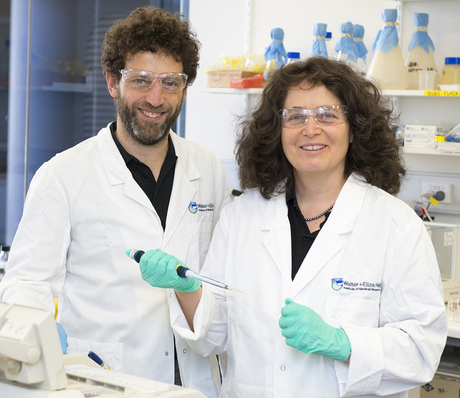Better understanding life's blueprint

Two proteins involved in guiding the early mammalian embryo through the correct developmental sequence are increasing understanding of how embryonic development progresses.
The new research, conducted at the Walter and Eliza Hall Institute, shows that the two proteins or chromatin regulators - MOZ and BMI1 - play opposing roles in coordinating the expression of genes that underlie early developmental programming.
“We showed that the proteins MOZ and BMI1 were important for initiating activation of the Hox genes - section by section - providing the blueprint the developing organism needs for proper development,” said Associate Professor Anne Voss, who conducted the work with a team including Dr Bilal Sheikh and Associate Professor Tim Thomas.
Hox genes specify cell identity along the anterior-posterior axis of the embryo, thus ensuring that body segments including the spine, nerves and blood vessels develop correctly and in the right place.
The researchers found that MOZ was responsible for activating the genes, while BMI1 prevented Hox genes from being switched on prematurely.
Hox genes are activated during the gastrulation phase of embryo development, shifting from a transcriptionally repressed state to an active chromatin state.
Using embryonic stem cell lines that lacked MOZ and BMI1, the researchers showed that MOZ and BMI1, respectively, promoted and repressed Hox genes during the shift from transcriptionally repressed to being active.
However, MOZ but not BMI1 was required to regulate Hox mRNA levels after the initial activation phase.
The researchers also found that the proteins were important for the initiation and correct timing of Hox gene expression, and that significantly reducing Hox gene expression still allowed normal development, as long as the timing and location of expression were correct.
“We found that if the Hox genes were activated too early or late, it had significant repercussions for the developing embryo, such as malformations of the spine,” Voss said. “Interestingly, we also found that producing an ‘accurate’ amount of MOZ or BMI1 in developing embryos was not nearly as important for correct development as when and where Hox genes were activated.”
Importantly, MOZ and BMI1 could provide a mechanism to transmit signals from the environment to the developing embryo.
Previous work by the research team showed that the MOZ relays external ‘messages’ to the developing embryo.
“We know that Hox genes can be directly affected by too much vitamin A, which can cause severe deformities in the embryo,” Voss said. “Substances or environmental challenges that impact MOZ or BMI1 expression could affect when and where Hox genes are expressed, causing defects in the developing embryo.”
The research has been published in Proceedings of the National Academy of Science.
Specially designed peptides can treat complex diseases
Two separate research teams have found ways to create short chains of amino acids, termed...
Exposure to aircraft noise linked to poor heart function
People who live close to airports could be at greater risk of poor heart function, increasing the...
Predicting the impact of protein mutations with simple maths
Researchers have discovered that the impact of mutations on protein stability is more predictable...



